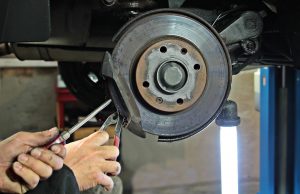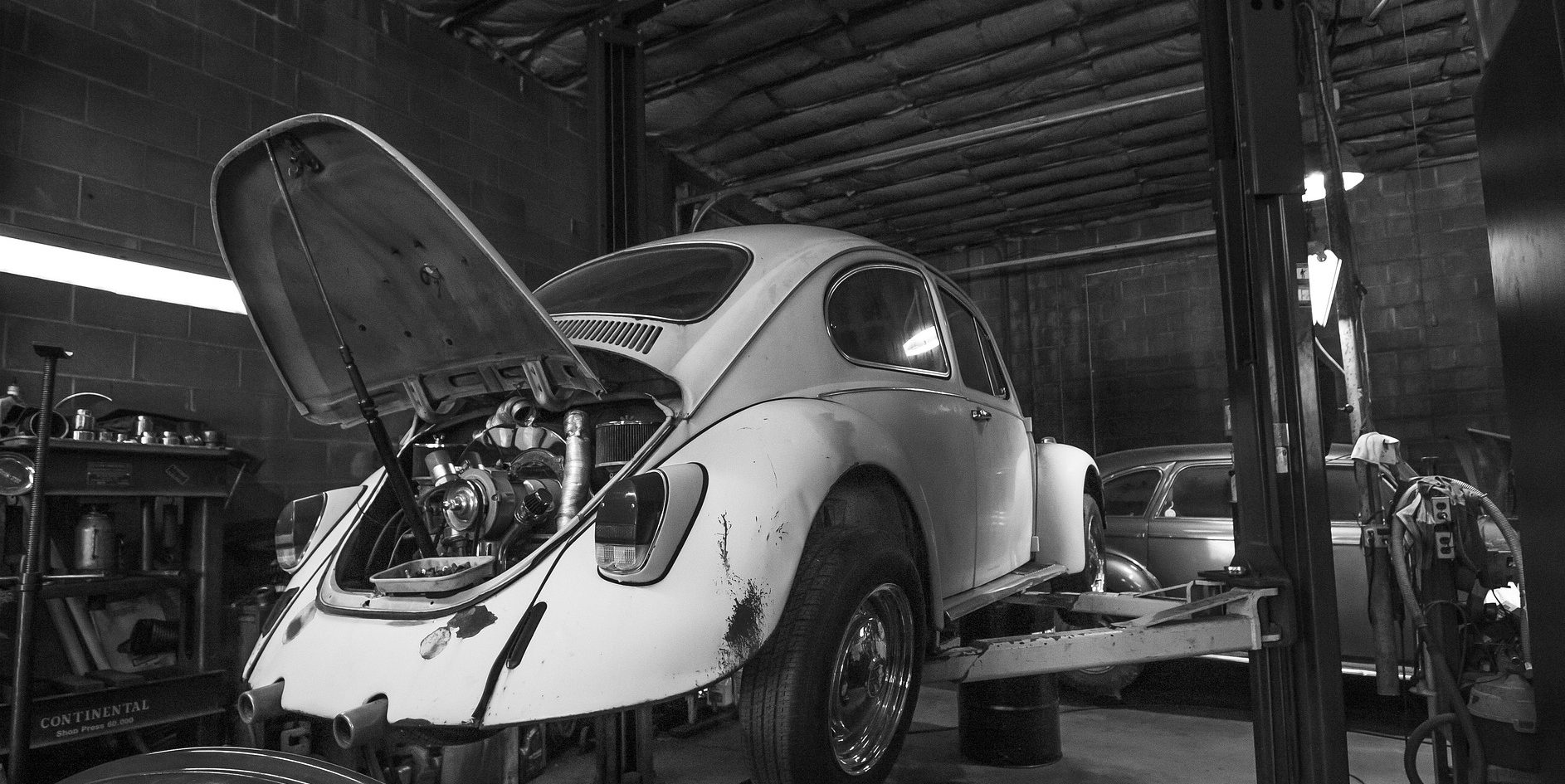Mohamed Mourad relocated to 6 October City to escape the hustle and bustle of downtown Cairo, but the move has not turned out as the 33-year-old accountant planned.
“I used to take one bus to work,” he says. “Now I have to take three.” Even worse, Mourad spends more than half his commute time waiting for buses. “If I arrive at the bus station 10 minutes late, I have to wait for 30 to 40 minutes for another one. For the first time in my life, I need to buy a car.”
But for Mourad and countless other Egyptians, car ownership is little more than a pipe dream. “I don’t have the means to secure EGP 250,000 (about $15,000) to pay for a decent new car,” he says.
However, he’s closely following moves by the government to revive domestic passenger car production. “If an Egypt-manufactured car is cheap enough,” he says, “I would buy it.”
The resurrection of the domestic auto brand promises benefits beyond just affordable vehicles. It would create jobs across several sectors, especially for parts suppliers. “Every car wholly manufactured in Egypt creates six direct jobs and another six indirect jobs,” says Ali Tawfik, Chairman of the Egyptian Auto Feeders Association. ِAs of last fiscal year, there were more than 86,000 workers directly and indirectly employed in automobile assembly and its feeder industries. Investments in auto assembly are valued at $1.6 billion and $1.4 billion by local parts manufacturers.

Storied legacy
Government support for Egyptian-made cars dates to 1960 when then-president Gamal Abdel Nasser established El Nasr Automotive Manufacturing Co. Its first car was the Ramses–a replication of NSU Motorenwerke’s Prinz model. Its engine, gearbox, and schematics were bought from the German company, while the rest of the Ramses was designed and manufactured locally.
By 1972, the Ramses had been replaced by several rebranded Fiat models such as the Nasr 132, 128 and 127, all mirroring the Italian automaker’s specs. By 1985, these models became obsolete since there were no updates introduced to their design or equipment.
In the 1990s, El Nasr Automotive began to build a Polish sedan, the Polonez, then Turkey’s Tofash Dogan. However, the two models were already outdated compared to other imports and production ceased in 2000.
Privately owned auto assemblers started investing in Egypt in 1992 when Chrysler began building the Jeep Cherokee at the military-owned Arab American Vehicle (AAV) factory on the Cairo Suez Highway. The Wrangler followed two years later.
In 1997, Mercedes-Benz started to assemble several models at a new Egyptian German Automotive Co. facility in the 6 October City’s Fourth Industrial Zone. It was a joint venture between entrepreneurs and Mercedes-Benz parent company Daimler AG.
BMW arrived in 1999 with its own factory — Al Fotouh Co. for Vehicle Assembly. The facility produced all of BMW’s sedans. Now, it focuses more on SUVs, including the X3, X4, X5, and X6.
Today,12 international firms assemble passenger cars in Egypt, with 45 percent of components locally sourced as required by law.

Driving forward
The government, however, wants to move to the next level: a car wholly manufactured and assembled in Egypt. Minister of Public Enterprises Hisham Tawfik, speaking on the sidelines of a conference in July, said that a new national car is a ministry priority. “The manufacturing plant will either be the El Nasr factory or the Engineering Automotive Manufacturing Co.,” he said. Both are currently mothballed. “We want to partner with either a Korean or Japanese company,” said Tawfik. “Both countries have automakers that produce models that most Egyptians find suitable.”
Tawfik envisions an international company that would operate a factory in Egypt that produces one or two models catering to domestic demand.
That is similar to what BMW did in 1994 with SUVs, which are produced only at the company’s plant in South Carolina. These cars were exclusively built in the United States, where they were in demand. Europe now gets its BMW SUVs from the company’s U.S. plant, rather than its main factory in Germany.
“When we talk about building an Egyptian car, we are prioritizing the transfer of technology, finances, expertise, and marketing,” said Tawfik. “We don’t want to be just the 13th assembler in Egypt. We want to be something more.”
He didn’t dismiss the possibility of producing an all-electric passenger car, given the government’s strategy to promote such vehicles.
In recent months, the Ministry of Public Enterprises officials met with six international carmakers including Nissan and Foton. “Nothing came out of these talks,” said Tawfik. “However, we have no timeframe for this project. We will sign with the first company that makes us a credible offer.” He noted there would be “reasonable” incentives for serious investors.
On the other hand, the Ministry of Military Production has already signed an agreement with Chinese Foton to manufacture electric buses and passenger cars, Yousry El-Nemr, chairman of the military-owned Factory 200, told Al Mal newspaper in July.
The Ministry of Military Production will own 24 percent of the company managing the assembly operation. Foton will have a 30 percent stake. Meanwhile, International Marathon United Technology (IMUT), a private company specializing in fitting vehicles with electric motors, will own 54 percent. The military will provide the factory, Foton will supply the motors and batteries, and IMUT will be in charge of manufacturing, according to El-Nemr.
To be Egyptian
“If we look at Ramsis, Nasr and Shahin, they are all perceived at ‘Egyptian’ cars,’ explains Effat Abdel Atti, the head of the cars division at the Cairo Chamber of Commerce. “Yet, they are less Egyptian than locally assembled cars today. We imported 70 percent of their components [to make the Ramses], while for cars made now it’s never more than 55 percent.”
The “national car” mystique was built on the branding of those cars, the unavailability of originally manufactured models in the local market, and media that promoted the notion that the vehicles were “100 percent Egyptian”.
“It is like what happened with the [Sico] mobile phone and [Education Ministry] tablet. They were both originally Chinese brands, but the marketing made people believe they were Egyptian,” says Abdel Atti.
To shape a widespread perception that the new car is Egyptian, Abdel Atti sees the government upgrading, diversifying, and increasing the capacity of auto feeder industries.
To that end, the state has signed agreements with a Hungarian company to fit the Nasr factory with the latest car production lines. State-owned Delta Steel, meanwhile, signed an upgrade agreement with a Chinese firm to produce steel suited for passenger cars. Similarly, Indian Bajaj Group signed a deal with the state to upgrade several cotton and textile factories to make the new car’s upholstery.
From a marketing perspective, the government is negotiating with a specialized international firm to market the new car. “That would give it the best chance to be sold abroad,” says Abdel Atti.
To make Egyptians feel that the new car is one of their own. “it has to be suitable for a family, small, easy to maintain and fuel-efficient,” Abdel Atti concludes.

Feasible undertaking?
For manufacturers who overcome insufficient industrial land plots, expensive high real estate taxes, and rising production costs, building an Egyptian car may prove feasible.
Car buyers could be enticed by a 100 percent Egyptian automobile priced significantly lower than imports. “The manufacturer must sell these cars for the same money as their second-hand imported alternatives,” says Salah Afifi, an independent auto trader at the Friday Car Market in Heliopolis. “That way, buyers can choose between an old imported car or a new Egyptian car.”
The former head of the Automotive Marketing Information Council, Raafat Masrouga notes that assemblers already are capable of producing a car that is 60 percent locally sourced. Therefore, building a near 100 percent Egyptian car shouldn’t be a big problem, he adds. “We have a robust feeder industry in Egypt, some of which supply the foreign parent companies of their local clients,’ says Masrouga. “It is only a matter of time before we have enough diverse feeders to build a 100 percent Egyptian car.”
To reach sufficient economies of scale, a factory would have to produce 50,000 to 100,000 units annually, says Mohamed Anis, AAV factory manager.
Ultimately to make the production of an Egyptian car feasible, the vehicles need to find export markets, something no local assembler has yet accomplished. “For that to happen, we need to have a comprehensive automotive strategy, not just individual incentives,” says Anis. “It should make local manufacturing easier and cheaper, rather than making imported competitors more expensive. That will be key to for the relaunch of a Made in Egypt automobile identity.”







